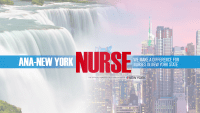Since 1950, at least 70,000 new chemical compounds have been invented and dispersed into our environment. Only a fraction of these have been tested for human toxicity. We are, by default, conducting a massive clinical toxicology trial, and our children and their children are the experimental animals.
— From Raising Children Toxic Free: How to Keep Your Child Safe from Lead, Asbestos, Pesticides, and Other Environmental Hazards
Our bodies are becoming reflections of our polluted air, water, soil, and foods and the toxic chemicals in everyday products. In the last several years, the Centers for Disease Control and Prevention’s National Health and Nutrition Examination Survey has measured toxic chemicals in the blood, urine, and breast milk of thousands of Americans. The findings: We all have hundreds of these chemicals in our bodies. And fetal cord blood contains similar contaminants.
We now recognize the environmental hazards we and our patients encounter in our workplace—the chemicals in floor strippers, pest-control substances, and sterilants—as well as the healthcare products that cause unnecessary chemical exposure. As a result, we have become interested in more responsible purchasing and other initiatives.
Nursing initiative
In 1995, the Institute of Medicine Committee was formed to study nursing, health, and the environment. The committee brought together nurses who have expertise in practice, research, education, and policy with professionals from other disciplines to explore how nurses could deal with environmental threats to health. The committee concluded that nurses should be involved in environmental health and made several recommendations:
• Environmental health should be re-emphasized in the scope of responsibilities for nursing practice.
• Nurses should participate as members and leaders in interdisciplinary teams that address environmental health problems.
• The concept of advocacy should be expanded to include advocacy on behalf of groups and communities, in addition to advocacy for individuals and their families.
As nurses became increasingly aware of the connections between the health of the environment and the health of their patients and themselves, they looked to their associations for information and tools. But most nursing associations didn’t have the structure that allowed them to respond to environmental health concerns and to support their members’ need for information.
To establish an entity in state associations that would increase their involvement, the Maryland Nurses Association, along with a 10-state American Nurses Association (ANA) Constituent Member Association (CMA) Partner Group, developed a document called “Guidance For Developing an Environmental Health Task Force.” This new entity would allow associations to take a leadership role in protecting the health of their members, patients, and communities and in developing and supporting environmental health policies in their states.
Creating the guidance document
After receiving funding to develop the document, the Maryland Nurses Association asked interested CMAs to complete a survey on their environmental health efforts. The Maryland Nurses Association then selected nine CMAs to join the partner group: Alabama, Connecticut, Florida, Michigan, New Jersey, New York, Ohio, Oklahoma, and Washington.
The group set up a series of conference calls—each focusing on a “Question of the Month.” Each state had the opportunity to address the question from their states’ perspective and to provide information about their experiences. The key components for forming the new entity, or Environmental Health Task Force, included organization structure and support, identification and selection of initiatives, identification of organizational partners, available resources, and strategies for addressing initiatives.
Much work has been accomplished since the project was initiated in June of 2005. The guidance document was completed and can be downloaded from the Maryland Nurses Association’s website. The document was also published and distributed to the presidents and executive directors attending the 2006 ANA Constituent Assembly. And several members of the partner group have begun to develop their own environmental entities in their associations; others have received funding to support environmental initiatives in their associations.
Using the guidance document in your association
The Environmental Health Education Center of the University of Maryland School of Nursing, which worked closely with the Maryland Nursing Association, is now initiating an effort to help CMAs and other interested nursing associations use the guidance document. Over the next year, 10 more associations will be invited to participate in discussions and workshops and learn about resources and funding available to assist in developing an environmental entity. Interested associations should contact the authors.
Meeting our obligations
Our patients, families, and communities are threatened by environmental pollution in our homes, workplaces, and communities. We have an obligation to learn about the threat, engage our nursing skills, speak the truth, and guide public policy for healthy environments. Establishing environmental health task forces in our nursing associations helps us take a giant step toward meeting those obligations.
Selected references
Department of Health and Human Services. Centers for Disease Control and Prevention. Third National Report on Human Exposure to Environmental Chemicals. Available at: http://www.cdc.gov/exposurereport/3rd/pdf/thirdreport.pdf. Accessed March 14, 2007.
Environmental Working Group. Body Burden—The Pollution in Newborns. Available at: http://www.ewg.org/reports/bodyburden2/execsumm.php. Accessed March 14, 2007.
Maryland Nurses Association. Guidance For Developing an Environmental Health Task Force. June 2006.
Mood L. Environmental health principles & recommendations for public health nursing—A panel and participant discussion of draft document. Panel conducted at: American Public Health Association Convention; November 2005; Philadelphia, Pa.
Pope AM, Snyder MA, and Mood LH, eds. Nursing, Health and the Environment. Washington, D.C.: National Academy Press; 1995.
For a complete list of selected references, visit www.AmericanNurseToday.com.
Kathryn V. Hall, MS, RN, is a nursing consultant in South Carolina. She was the Executive Director of the Maryland Nurses Association when this article was written. Brenda M. Afzal, MS, RN, is Director of Health Programs in The Environmental Health Education Center at the University of Maryland School of Nursing, Baltimore. Barbara Sattler, DRPH, RN, is Director of The Environmental Health Education Center at the University of Maryland School of Nursing.

















